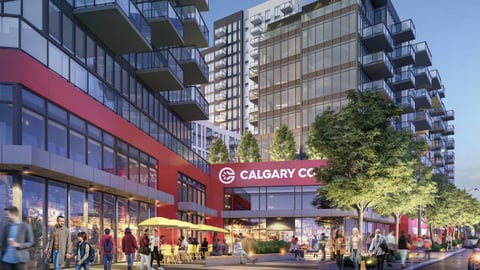Field Agent GM breaks down grocery shopping trends in Western Canada
Given the sheer vastness of Canada, regional differences in grocery shopping habits are usurprising. Each region is shaped by diverse factors—from weather, demographics and immigration patterns to regional grocery competition and real estate trends. But while it's easy to speculate about these differences, accurately identifying how they impact brands’ go-to-market strategy in the grocery channel is more challenging, particularly for national brands. Discussion has traditionally focused on the contrasts between English Canada and Quebec, while retail dynamics in Western Canada—home to over 30% of the country's population—have tended to be unexplored and underappreciated.
A new report hopes to close that gap. What’s On The Mind of the Western Grocery Shopper is a collaboration between retail data and tech company Field Agent Canada and the Food Executives Club of Vancouver (FECOV). Jeff Doucette, general manager of Field Agent Canada, recently presented the findings of their research to an audience of retail and CPG executives at a FECOV meeting.
Doucette, who launched Field Agent Canada in 2011 after holding roles at L’Oréal Canada and Unilever Canada, caught up with Canadian Grocer from his Calgary home office. He shared valuable context for some of the report’s most intriguing data points, underscoring the distinct retail landscapes and shopping behaviours not only between Eastern and Western Canada but also within Western Canada—particularly between B.C. and the Prairies (Alberta, Saskatchewan and Manitoba).
Tell us how the research came about.
While Canada has a population of just 40 million, the country is made up of distinct pockets and unique realities. We were hearing from FECOV members, who primarily work with retailers in Western Canada, that there is a lot of national data, but not much about shopping behaviours in Western Canada. And so, our research was really driven by their questions.
Can you share an anecdote when, in a professional capacity, regional differences came to the fore?
I’ve been in Calgary for 15 years now, but grew up on the East Coast and also lived in Ontario and Quebec. In a past professional life, I was responsible for creating summer promotions for Hellmann’s and Knorr. I presented a national promotion that we wanted to launch on May two-four weekend to the Calgary office and they said, “No way, we can’t do that. It snows here most long weekends and people stay in.” We intuitively know that Quebec is a unique market because of language and culture, but this was an early realization for me that a blanket approach doesn’t always work in the rest of Canada, either. Consumer mentalities are different depending on where you live in the country and there’s opportunity for national brands to tap into the regionality of things.
Let’s look at some of the great insights revealed in What’s On The Mind of the Western Grocery Shopper. Over half of Canadians (58%) expect Costco to be one of the stores where they shop most often for groceries, but that number is highest in Western Canada (65% in the Prairies and 63% in B.C.). Costco also finished at the top when shoppers in Western Canada were asked to rank retailers by how they perform overall as a retailer. What is Costco doing well?
Costco has its origins in the West Coast. The Canadian operation is also split into two distinct business units. An office in Burnaby, B.C. manages Costco West and Costco East is run from Ottawa. The real estate landscape is also different. Costco has a store in downtown Vancouver and stores in Calgary anchoring retail centres. There are fewer of the Costco stores you find in Ontario, which are typically situated a bit out of the way, making them more of a weekend destination because you know you’re going to be in there for a long time. Costco stores in Western Canada are often next to the ring road, making them easy to get in and out of.
READ: Costco is Canada’s top grocery retailer, according to Dunnhumby
In B.C., 67% of shoppers “shop around multiple stores” to try and save money on groceries, higher than shoppers in the Prairies (60%). What drives this shopping behaviour in B.C.?
Many B.C. retailers traditionally deployed a high-low strategy—higher everyday prices with lots of featured items on promotion. Banners like Save-on-Foods and Safeway executed that strategy particularly well. And so, consumers became conditioned to checking the flyers every Thursday and planning a shopping trip to multiple stores based on the best deals. This behaviour has been passed down through generations, with many learning to shop strategically by observing their parents. And so, promotions on price can be very successful in driving store traffic. But you don’t want shoppers only cherry-picking the deals—there is no making money in that over the long-term.
PHOTO GALLERY: Buy-Low Foods adds new location in B.C.
Shoppers in Western Canada are most likely to go to a Superstore for a quick trip followed by Walmart. But No Frills also showed up on that list. How is the retail environment changing in Western Canada?
There has been a shift to shoppers turning to the discount arm of retailers when making a quick trip for groceries. Conventional grocers are still in the mix, but they’re losing ground on those shopper trips because of increasing product options including store brands in the discounter space. As a result, we’ve seen Empire Co. convert quite a few Safeway stores into FreshCo, its discount arm. In Calgary, a No Frills store will soon open in the beltline, becoming the first discount grocery store in the downtown core. It will be interesting to see how they do and the kind of products they offer urban shoppers.



